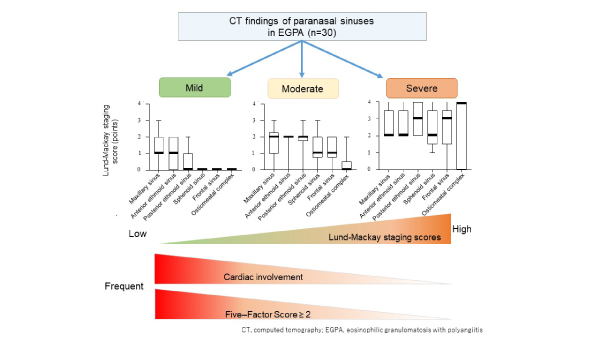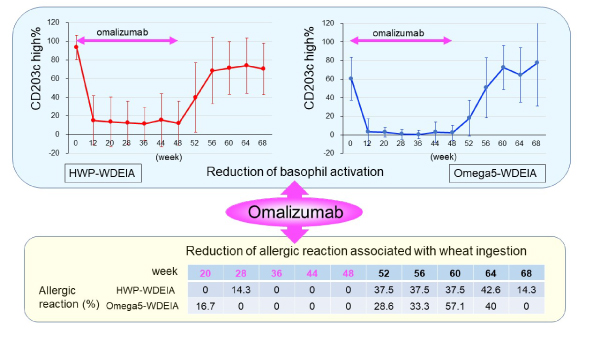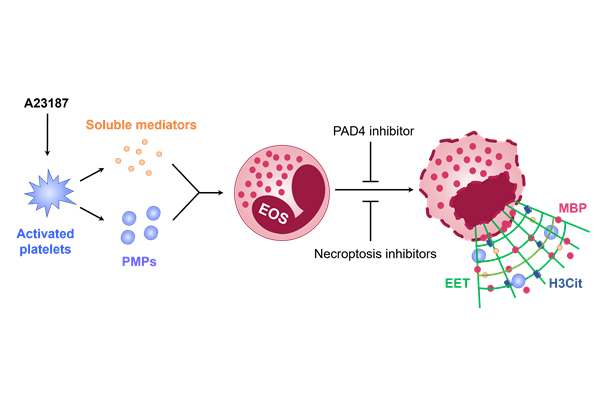Volume 72, Issue 3 (July 2023)
Editor's Choices
Editor’s comment: Paranasal sinuses are one of the most representative organs affected by eosinophilic granulomatosis with polyangiitis (EGPA). Iwata et al. compared computed tomography (CT) findings in paranasal sinuses of EGPA with those of other eosinophilic sinus diseases such as NSAID-exacerbated respiratory disease (N-ERD, aspirin-tolerant asthma, and eosinophilic chronic rhinosinusitis without asthma (ECRS). They found a large variation in total LMS scores in EGPA, but the scores were significantly lower in EGPA than in those in N-ERD or ECRS without asthma. They also found that EGPA patients with lower LMS system scores were associated with a higher frequency of extra-respiratory organ involvement.
Editor’s comment: Antigen-specific IgE is intimately involved in the pathogenesis of wheat-dependent exercise-induced anaphylaxis (WDEIA). In this phase 2 multicenter single-arm trial, Chinuki et al. evaluated the efficacy and safety of long-term omalizumab treatment for adult patients with WDEIA. They found that over 80% of the patients achieved a less than 10% basophil activation rate against all fractionated wheat preparations. They also found that over 60% of the patients who achieved the primary endpoint experienced no allergic reaction, suggesting that omalizumab treatment is effective for adult patients with WDEIA.
Editor’s comment: Eosinophil extracellular trap (EET) formation, a cellular process by which activated eosinophils release net-like DNA fibers, is thought to be involved in the pathogenesis of many eosinophilic diseases. Sim et al. investigated the involvement of activated platelets in inducing EET formation, finding that platelets activated by calcium ionophore but not those activated by thrombin or adenosine diphosphate (ADP) stimulated eosinophils to generate EET. They also found that EET formation by calcium ionophore-activated platelets was mediated by necroptosis pathways but not by NADPH oxidase.





